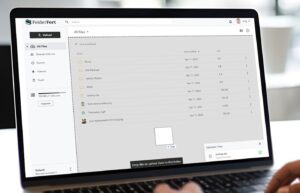A digital thread is more than just digital transformation–it’s the opportunity to use data for every part of your business.
In a McKinsey report from 2016, Vince Campisi, then chief operating officer at GE Software, wrote about, “Enabling a digital thread—how you can connect innovation through engineering, manufacturing, and all the way out to servicing a product.”
Campisi said his company had been able to “take over 60 different silos of information related to direct-material purchasing, leverage analytics to look at new relationships, and use machine learning to identify tremendous amounts of efficiency in how we procure direct materials that go into our product.”
SEE: Special report: How to win with prescriptive analytics (free PDF) (TechRepublic)
In the supply chain, the focus around digital threads has been happening for years. Supply chain lingo uses terms like “360-degree visibility” of the supply chain and “single version of the truth” when it refers to consistent data that everyone in the supply chain uses to complete a business process.
However, the supply chain industry is still working toward this 360-degree visibility and single version of data truth—all the more reason for acknowledging GE Software’s outstanding achievement.
The ability to leverage different forms of data across the enterprise, breaking down departmental data silos, and making data available to everyone in the business with a need to know, is also a central focus of chief data officers in 2020.
What is a digital thread?
The digital thread in a manufacturing company means that a sales representative can book an order, with the order going to finance, engineering and manufacturing. The sales rep can also take photos of a customer’s facility to ensure the item fits into its proper space. This unstructured data accompanies the order so engineering can model the product. The drawing from engineering then accompanies a bill of materials that is converted into work orders for manufacturing.
On the service and installation side, a technician uses his or her mobile device to browse photos, diagrams, and instructions during installation. In a follow-up to installation, the service technician might recognize certain adjustments that must be made to the product to meet customer specifications. Purchasing is notified that a certain component isn’t working perfectly. Engineering receives feedback for improving its design, and sales learns that the customer’s full requirements still have not been met.
In short, everyone from sale to build to install to service is in the data loop. They see not only standard data, but also big data such as videos, drawings, and photos that accompany the order. This is the digital thread in action.
Here are some tips for creating a digital thread in your organization.
Align with the business and with the CIO
Everyone at the C-level, and especially the CIO, should buy into the idea of leveraging data and breaking data silos. This commitment must be more than lip service because it will force business units to surrender data they’d rather keep to themselves, and it will compel business units to collaborate with each other more often than they have in the past. On the technical side, CDOs will need IT’s technical assistance to perform systems integration and preparation for both structured and unstructured big data.
Centralize the data
If both structured and unstructured data are being stored in separate silos, the goal is to centralize them so data can be curated, managed, and secured. IT is the best department to do this, as well as develop a data architecture that effectively centralizes and maintains data at the same time that it spins subsets of this data out to different business units.
Keep the data consistent
If the data is centralized, there is only one master copy of data no matter who adds to or updates it. This ensures data accuracy and that everyone is making decisions based on the same data.
Understand the CDO role
CDOs have a semi-technical role because they must be able to work hand in hand with IT. But the primary directive of the CDO is to understand and digitalize the business. The CDO must see that data can answer key business questions and provide immediate, actionable results. Much CDO work is in soft skills areas: They must provide a means for employees to improve data literacy skills and for departments to become more data driven.
SEE: How to be a successful Chief Data Officer: 3 tips (TechRepublic)
Spinning the thread
Most companies aren’t already doing this, but they can get started by creating digital threads of standard and big data that can be used by every element of a business operation from start to finish. It’s one of the best ways to transform a company into a data-driven organization and should be a goal that’s on every CDO’s list in 2020.
Also see

Image: Pogonici, Getty Images/iStockphoto
Source of Article




